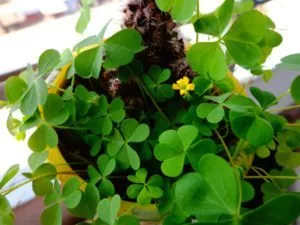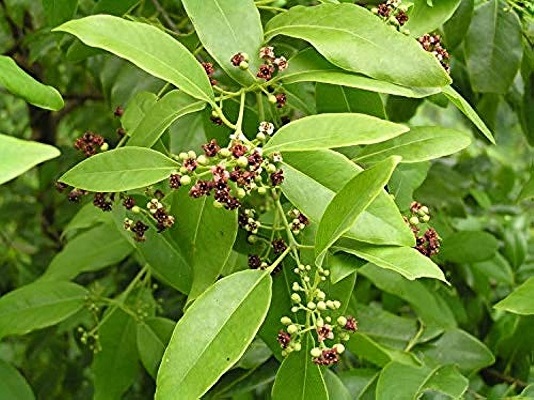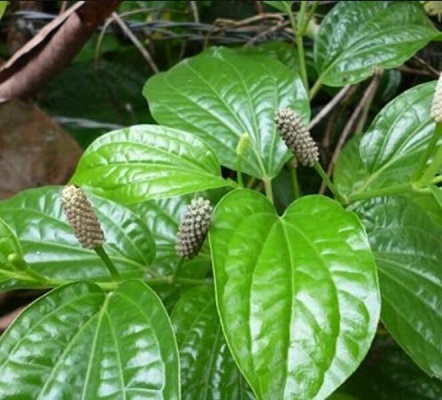On This Page
Changeri (Oxalis corniculata) – Uses, Benefits, and Dosage
Introduction
Changeri commonly known as “Indian sorrel” is a small creeping perennial herb which forms roots at nodes. Changeri is also known as ‘Amla pathrika’ because of the sour taste of its leaves. The scientific name Oxalis corniculata is formed from the words “Oxalis” which indicates the abundance of oxalic acid in the plant and “corniculata” meaning horny appendages.
The scientific experiments conducted by Dr. Gupta’s IAFA have proven the actions of this herb, like antimicrobial, antibacterial, and anti-inflammatory. Changeri has been comprehensively recommended for its actions like carminative, digestion promoting, cure piles, and cure skin diseases. As it is having Kapha and Vata dosha pacifying in nature along with antiallergic action, it is widely used in allergic skin diseases.
Various studies show that liver damage caused by the overdose of paracetamol can be treated by using the extracts of Oxalis corniculata. The phytoconstituents present in the plant helps to reduce serum enzymes such as Glutamate oxaloacetate transaminase, glutamate pyruvate transaminase, Alkaline phosphatase which indicate its hepatoprotective and antioxidant potential. Nowadays Changeri (Oxalis corniculata) is widely used as a remedy for Piles. The juice of Oxalis corniculata is used as an ingredient in relieving insanity. The abundant medicinal properties of Changeri make it one of the most commonly used drugs in both modern and ayurvedic treatments.
Action of Changeri (Oxalis corniculata) in Allergies
Phytoconstituents naturally found in Changeri (Oxalis corniculata) are Vitamin C, Carotene, Malic acid, Tartaric acid, and C-glycosyl flavanoids. These chemicals aid in the anti-inflammatory, antibacterial, and anti-allergic actions of this herb. The Kapha and Vata dosha pacifying action makes it as one among the favorite herbs for Ayurveda practitioners in treating various allergic conditions.
Vernacular Names
| Hindi name | Teen Pattia (three leaflet structures on leaves) |
| Sanskrit name | Lonika, Kshudra amlika, Lola, Amlalonika, Dantaratha, Chatushparni |
| English name | Indian Sorrel |
| Tamil name | Paliakiri |
Botanical Name
Oxalis corniculata
Family
Oxalidaceae
Phytomorphology of Changeri (Oxalis corniculata)
Changeri also known as “Amlika” due its nature of amla (sour) taste is a creeping weed. Numerous creeping branches on the ground rooted it again to form a new plant. The maximum height of plant is 2 to 3 feet. Changeri is also known as “Teen Pattia” due to its three heart shape leaflet structure. Yellowish color flower grow in cluster. Dark, egg-shaped, and flattened seeds are present in cylindrical capsule-shaped fruits.
Ayurvedic Reference of Changeri (Oxalis corniculata)

Geographical Distribution of Changeri (Oxalis corniculata)
Changeri is a perennial herbaceous creeping weed that grow generally in gardens, wasteland, and roadsides in all provinces of India.
Phytoconstituents of Changeri (Oxalis corniculata)
Oxalis corniculata chemically contains Malic acid, tartaric acid, citric acid, vitexin, isovitexin, Vitamin C, Carotene, and C-glycosyl flavanoids.
Parts Used of Changeri (Oxalis corniculata)
- Fruit
- Leaf
- Whole plant
Dosage of Changeri (Oxalis corniculata)
- Juices (swaras) –15-30 ml two times a day
- Decoction (Kwath) – 10-15-ml two times a day
Medicinal Properties and Uses of Changeri (Oxalis corniculata)
- In Food Intolerances: It is a good appetizer, stimulates digestive fire, relieves abdominal pain; treats Kapha and Vata dosha-related diseases like malabsorption syndrome, IBS, Grahani, diarrhea.
- Anti-Fungal: Used alone as a single herb against fungal infections like tinea infection, aspergillosis.
- Anti-Viral: Used to treat HIV, HPV, or any kind of viral infection.
- Immuno-modulator: Used in immune-compromised patients due to richest source of Vitamin C.
- Nausea: Relieves nausea and burping.
- Antiallergic: Used to relieve aamvisha (toxins) or free radicals from the body, stimulates T-cells also.
- Skin Diseases: Used to treat viral warts, corns, and boils.
- Eye Diseases: Used in early stages of cataract.
- Cardiac Tonic: For the overall wellness of the body due to rich sources of Vitamin C and potassium.

Have A Health Issue?
Consult Online
- Dr. Sahil Gupta (B.A.M.S., M.H.A.)
Ayurvedic Allergy Specialist
CEO & Founder of IAFA®
Home Remedies of Changeri (Oxalis corniculata)
Changeri (Oxalis corniculata) is a popular herb, which has undergone various scientific studies in a wide range of conditions. Changeri juice and fine powder have great anti-inflammatory, antiallergic and antibacterial action.
- In Piles: A combination of leaves of Trivrit (Operculina turpethum), Danti (Baliospermum montanum), Changeri and Citraka (Plumbago zeylanica) are fried in ghee or oil along with curd and used internally.
- In Insanity: Juice of Changeri, sour gruel, and jaggery to be taken in equal quantity, churned together, and administered internally as a meal in case of insanity.
- In Liver Disorders: The extract of Oxalis corniculata leaves can be used in the treatment of liver damage caused by the over usage of paracetamol. 20-30 leaves can be used for making extract and can be consumed once daily for 6 weeks.
- In Bacterial Infection: The decoction made by grinding 10-20 leaves of Oxalis corniculata along with Curcuma (Curcuma longa) has excellent antibacterial properties. It can be taken internally once daily for two weeks to alleviate the bacterial infection.
- Used in Fever: The whole plant Oxalis corniculata is crushed and a decoction made from it has antipyretic action. 30 leaves can be used to make a decoction of 200 ml. This decoction taken for three weeks helps in curing fever.
- Used in Hyperglycemia: The leaves of Oxalis corniculata collected and crushed along with Haridra (Curcuma longa) and Amalaki (Embilica officinalis) made into a decoction is having excellent hypoglycemic action and maintains the blood glucose level.
Dr. Gupta’s effort in promoting Ayurveda to all is benefiting thousands of individuals. IAFA is producing herbal products of good quality to treat various conditions. Ayurveda is the only measure that assures natural friendly healing. Dr. Gupta is treating various ailments through using unique pulse diagnoses and unique herbal combinations explained in Ayurveda. A high success rate in disease curing through natural measures is the major aim of IAFA.
Reach us today and feel the unique herbal healing of Ayurveda!!!
Was this Page Helpful?
Read More Articles
-

Kasini (Cichorium intybus)
Kasini (Cichorium intybus) commonly known as Chicory is a perennial herb, with large…
-
-









